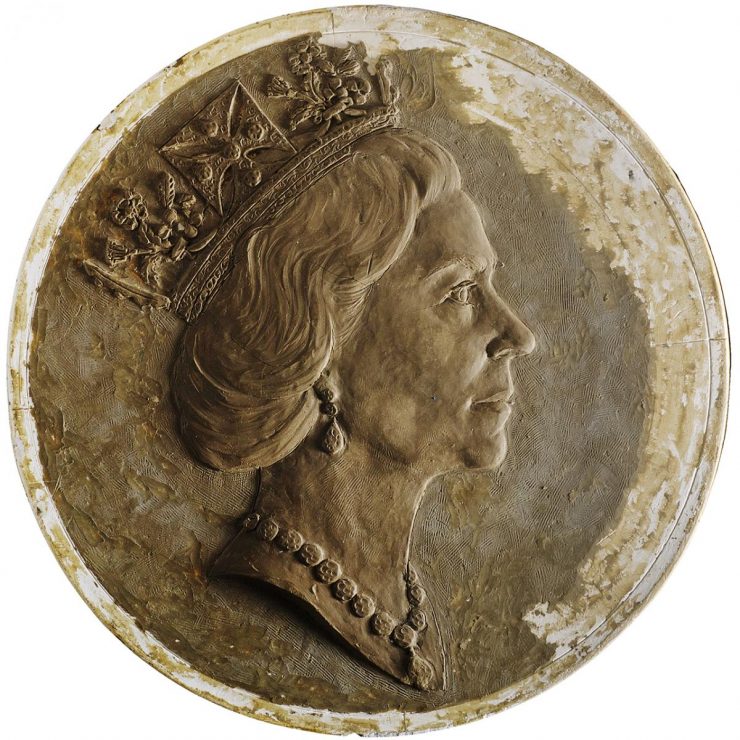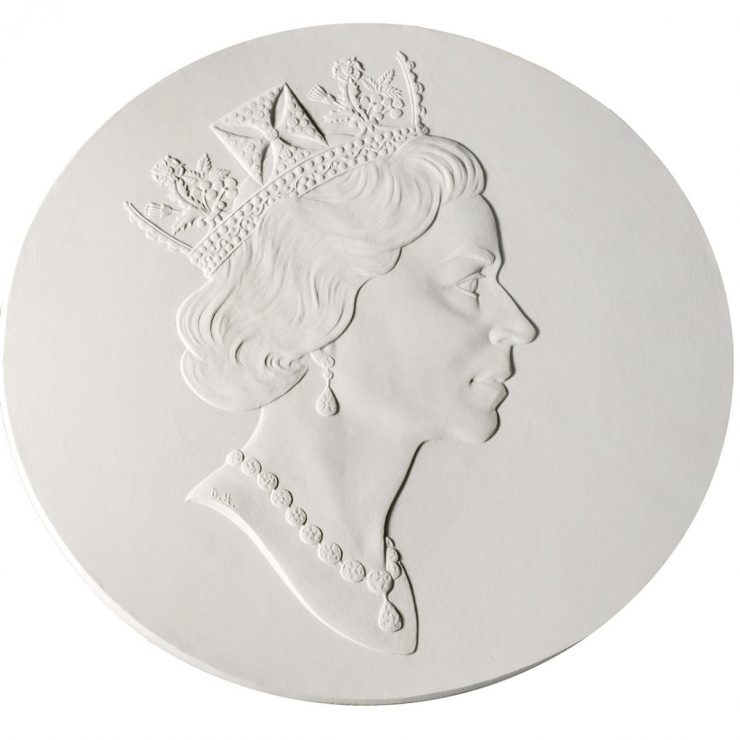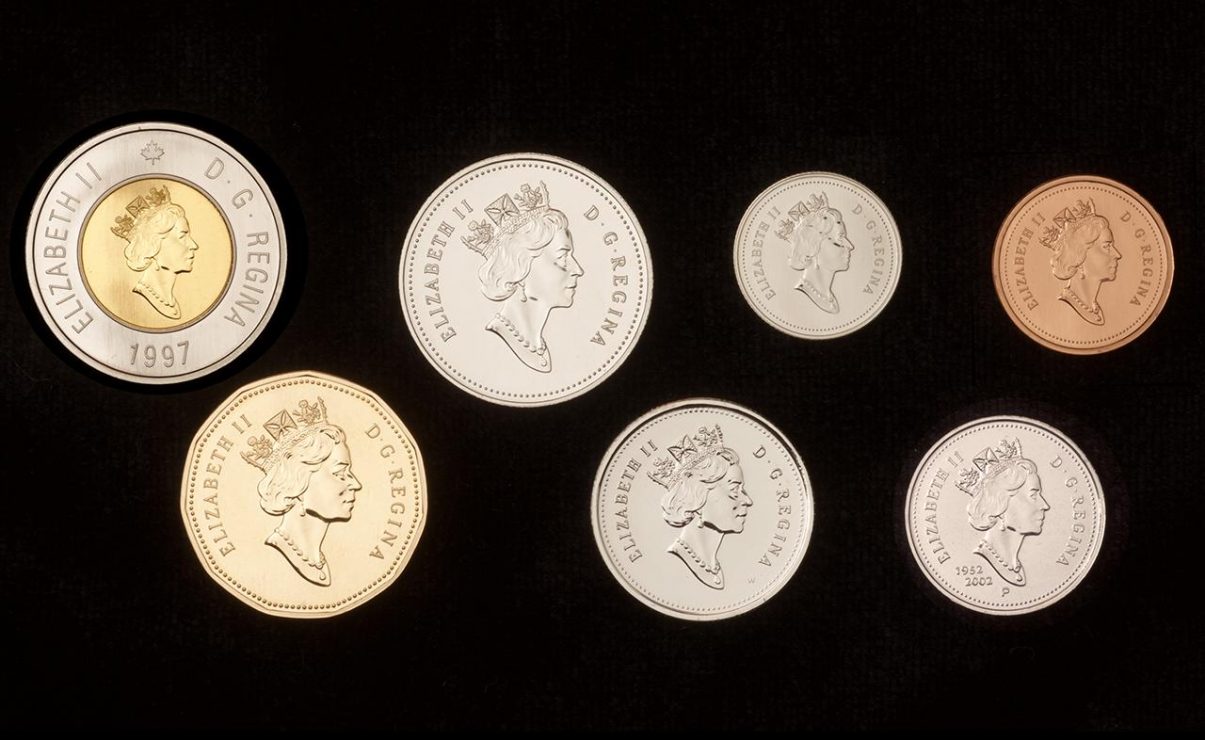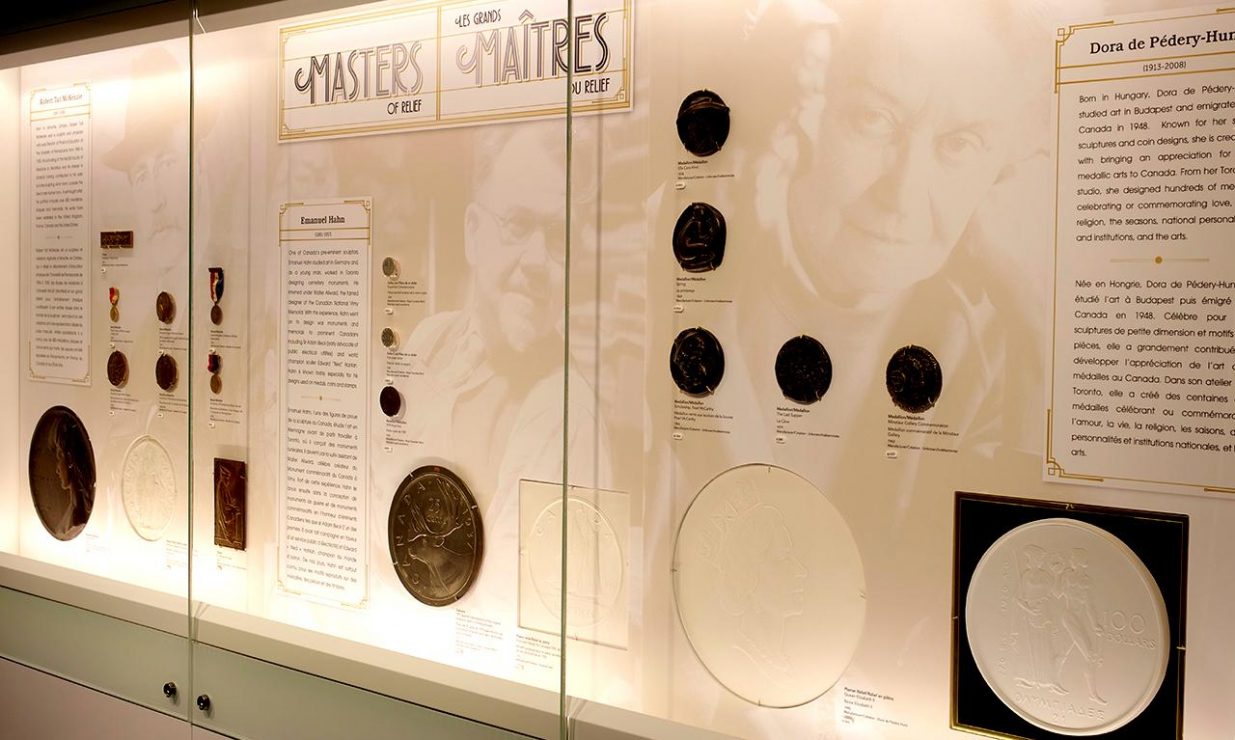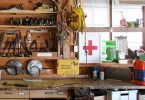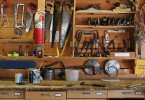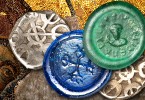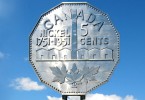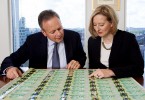Sculptor Dora de Pédery-Hunt
You will not see Dora de Pédery-Hunt’s signature on any coin, but you will see her initials on the Queen’s shoulder.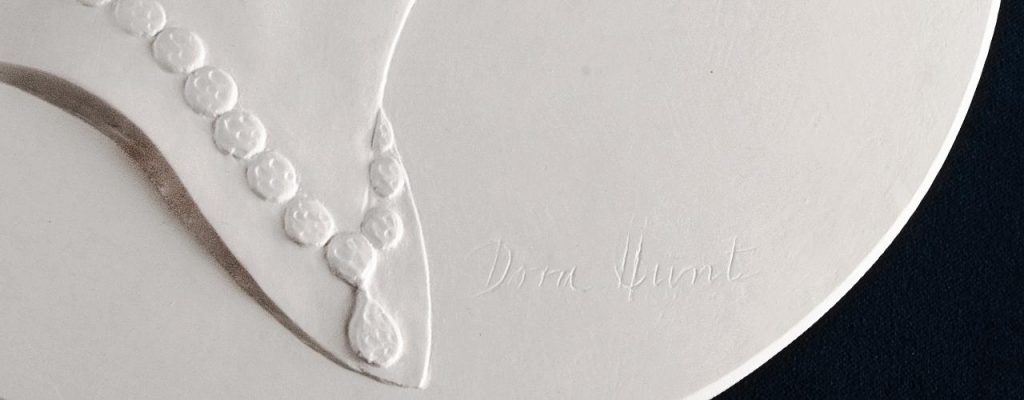
Limited Edition plaster reproduction of working model, #21 of 275. (NCC 2009.020.003)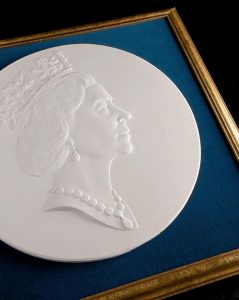
Dora de Pédery-Hunt’s work is as familiar as the change that jingles in your pocket. In all likelihood, you have come in contact with her work while using coins to pay for your morning cup of coffee. Dora de Pédery-Hunt was the first Canadian artist to design and sculpt an effigy of Queen Elizabeth II for coinage. Incidentally, this was the first time someone other than a British citizen had designed an official depiction of Queen Elizabeth II for this purpose.
When the Royal Canadian Mint (RCM) selected Dora’s design, she painstakingly began working on a clay model. All of the details had to be carefully considered, as the depth of the relief had to be suitable for producing coins. This model was then captured in plaster, where additional refinements could be made. Any errors could easily be corrected at this stage with the addition of more plaster. The size of the plaster is usually several times larger than the actual coin in order to capture all of the fine details.
At the time, there were many steps between the plaster model and the production of coins. Today, the process has been significantly refined. The plaster model is scanned in 3D and any final corrections or enhancements can be made digitally. Guided by this digital file, an engraving machine cuts the design into a piece of steel at the correct size of the coin. Known as a reduction punch, this piece of steel is then used to make the dies which will actually strike the coins. The tremendous pressure used to strike the coins wears down the dies, so the mint will periodically use the punch to create new dies.
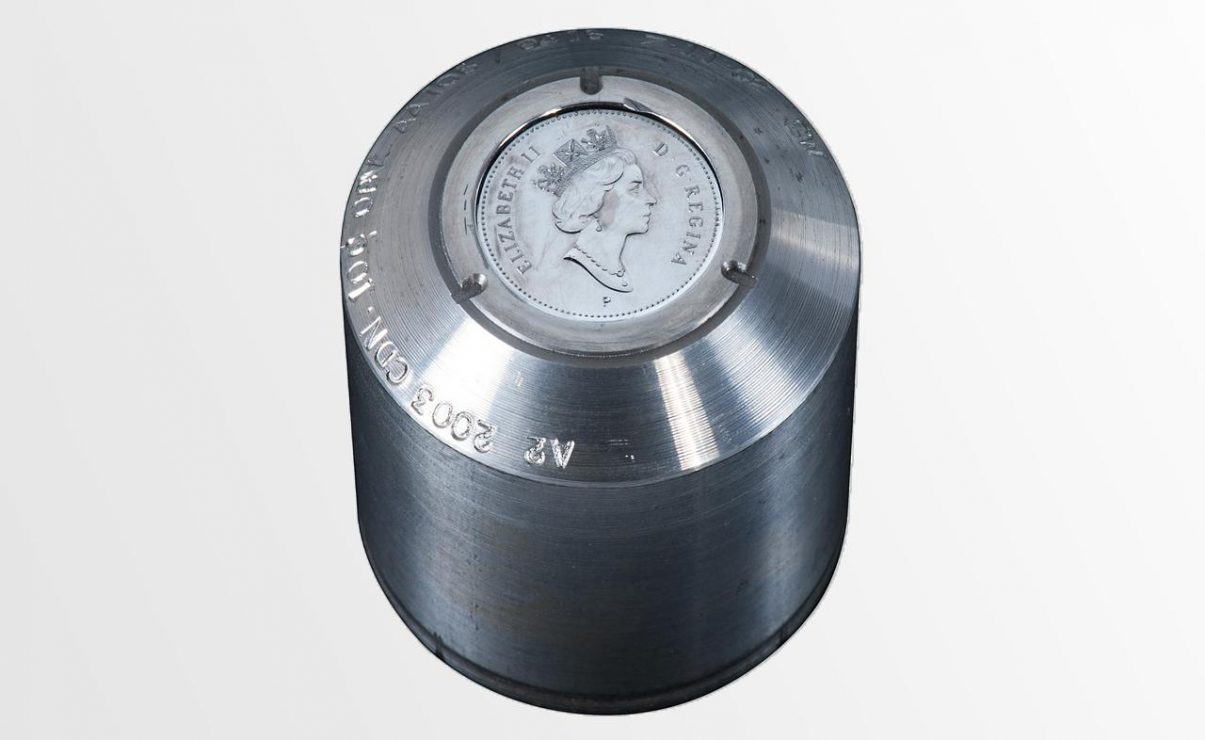
In 1999, the “P”, under the portrait on this punch, was added by the RCM to indicate a change in metal from nickel to multi-ply plated steel. (NCC 2010.058.006)
This portrait has appeared on all Canadian coins minted between 1990 and 2003.
The Museum Blog
The Adventure of Exhibit Planning VIII
By: Graham Iddon
On this trip, we were all excited to see the 8-foot-tall wooden panels with the full copy printed directly onto them. Using a new process, staff of the exhibition fabrication department at the Sherbrooke Nature and Science Museum have produced some very impressive results.
The Adventure of Exhibit Planning VII
An exhibition fabrication company was finally selected by the Museum to produce the upcoming “Voices from the Engraver” travelling exhibition. It’s all very exciting.
New Acquisitions
By: Raewyn Passmore
The recent additions to the National Currency Collection described below are from very different parts of the world and are between 1500 and 2500 years old.
The Big Nickel
By: Paul S. Berry
The commemorative 1951 5 cent piece was issued to mark the 200th anniversary of the naming of nickel and its isolation as an element. Recently, I had the great pleasure to participate in the Big Nickel anniversary festivities and give a talk about the design competition for the 1951 5 cent coin.
The Adventure of Exhibit Planning VI
By: Graham Iddon
This is not the time for ‘nay sayers’. Basically, we planned a luxury car knowing that when all was said and done, it was going to be a very nice family sedan (maybe with the big engine?).
The Adventure of Exhibit Planning V
By: Graham Iddon
Now the writer takes a deep breath and attempts to take a subject like the ‘representation of 75 years of national identity as depicted on stamps and bank notes’ from 50 pages of research and squash it into 65 words.
The Senior Deputy Governor’s Signature
By: Graham Iddon
For much of their history, Canadian bank notes have represented a promise, a guarantee that they could be redeemed for “specie” (gold and silver coins) at their parent institution.
